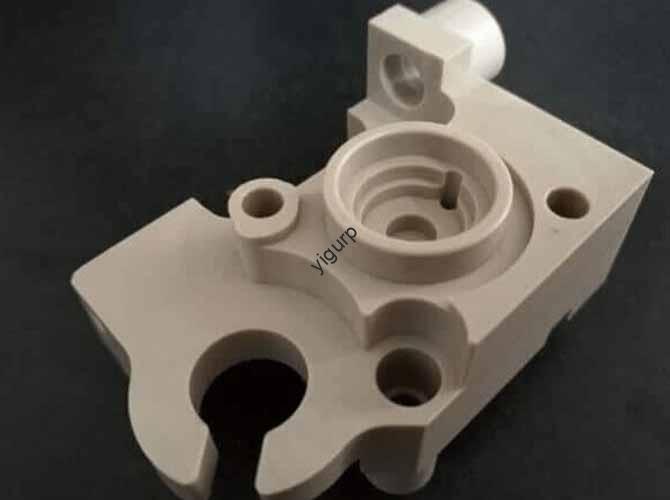Have you ever struggled to find a 3D printing material that’s both durable and flexible—one that can handle repeated bending without cracking or losing shape? Не смотри дальше, чем 3D printing flexible resin. This versatile material has become a game-changer for industries needing parts with elasticity, from medical devices to consumer electronics. Ниже, we break down its key types, must-have features, Реальное мир использует, and how to overcome common challenges.
1. Key Types of 3D Printing Flexible Resin: Который подходит вашему проекту?
Not all flexible resins are the same—each type has unique strengths for specific applications. The table below compares the three most common options to help you choose:
| Тип материала | Основные преимущества | Идеальные приложения | Диапазон затрат (За кг) |
| Термопластичный полиуретан (ТПУ) | Отличная износостойкость, маслостойкость, и механическая прочность; retains flexibility at -40°C to 80°C | Automotive seals, Телефонные чехлы, industrial gaskets | \(50- )80 |
| Flexible Polyvinyl Chloride (ПВХ) | Бюджетный, Легко обрабатывать, and good chemical resistance; compatible with most resin 3D printers | Медицинская трубка, door/window gaskets, low-stress toys | \(30- )50 |
| Flexible Epoxy Resins | Superior adhesion to metals/plastics; high chemical stability; heat-resistant up to 120°C | Coatings for electronics, adhesive components, Небольшие механические детали | \(60- )90 |
2. Non-Negotiable Characteristics of High-Quality Flexible Resin
What makes a 3D printing flexible resin “high-quality”? These three features are non-negotiable—they directly impact part performance and lifespan:
- High Elasticity: The resin must return to its original shape after being stretched or compressed (до 300% elongation for TPU). Например, a TPU phone case should bounce back to form after being dropped, instead of staying dented.
- Tear Resistance: It needs to withstand physical stress without breaking. A flexible PVC medical tube, например, should handle repeated kinking during use without tearing.
- Химическая устойчивость: It should resist oils, растворители, and common cleaning agents. This is critical for parts like industrial gaskets (exposed to machine oils) или медицинские инструменты (стерилизовано с резкими химическими веществами).
3. Solving Industry Pain Points: Реальные приложения
3D printing flexible resin solves long-standing problems in three key industries. Here’s how it’s making a difference:
А. Медицинские устройства: Safety and Sterility First
Medical manufacturers often struggle to find materials that are both flexible and biocompatible. Flexible resin checks both boxes:
- Вариант использования: Custom orthotic insoles. Resin can be 3D printed to match a patient’s foot shape exactly, with TPU variants offering the elasticity needed for all-day wear.
- Решение: Biocompatible TPU resins (Соответствует ISO 10993) are sterilizable via autoclaving, making them safe for tools like surgical graspers or catheter components.
Беременный. Автомобиль: Durability for Harsh Environments
Car makers need interior parts that can handle temperature changes and daily use. Flexible resin delivers:
- Вариант использования: Dashboard seals. Flexible epoxy resin seals resist heat from the engine (до 120 ° C.) and don’t crack in cold weather, preventing dust or water from entering the cabin.
- Результат: Automakers report a 40% reduction in seal replacement rates compared to traditional rubber parts.
В. Потребительская электроника: Comfort and Protection
Electronics brands want protective cases that feel good in the hand. Flexible resin offers the perfect balance:
- Вариант использования: Wireless earbud tips. TPU resin tips conform to the ear canal, providing a secure fit and reducing discomfort during long use.
- Бонус: Resin can be colored or textured during printing, eliminating the need for post-production painting.
4. How to Overcome Common Flexible Resin Challenges
Even the best 3D printing flexible resin can cause issues if not used correctly. Here’s how to fix three top problems:
| Испытание | Причина | Step-by-Step Solution |
| Parts crack after printing | Resin wasn’t cured properly; too much stress during removal | 1. Cure parts for 5–10 minutes in a UV chamber (instead of 2–3 minutes). 2. Use a flexible build plate to reduce removal stress. |
| Resin is too sticky post-print | Incomplete surface curing | 1. Wipe parts with isopropyl alcohol (90%+ концентрация) после печати. 2. Do a 2-minute “post-cure” under UV light to harden the surface. |
| Плохой адгезия слоя | Printing temperature too low; resin expired | 1. Heat the resin tank to 25–30°C (most flexible resins perform best here). 2. Check the resin’s shelf life (использовать внутри 6 months of opening). |
5. Перспектива Yigu Technology
В Yigu Technology, Мы видим 3D printing flexible resin as a bridge between design creativity and real-world functionality. We’ve helped clients—from medical device startups to automotive suppliers—cut production time by 35% using our custom TPU and epoxy resins, which are optimized for fast printing and long part life. We’re also developing eco-friendly flexible resins (Сделано с 20% recycled materials) to meet growing sustainability demands. Для нас, the goal isn’t just to sell resin—it’s to help you build parts that work better, last longer, and solve your unique challenges.
Часто задаваемые вопросы
- Can 3D printing flexible resin be used for large parts (НАПРИМЕР., Автомобильные бамперы)?
It’s better for small to medium parts (up to 30cm in size). Для больших частей, we recommend combining flexible resin with a rigid core (НАПРИМЕР., Плата) to balance flexibility and structural strength.
- How long do 3D printed flexible resin parts last?
С надлежащим уходом (avoiding extreme heat/solvents), Части TPU длится 2–3 года, while epoxy resin parts can last 4+ годы. Для медицинских устройств, we recommend replacing parts every 6–12 months (per sterilization cycle limits).
- Is 3D printing flexible resin compatible with all resin 3D printers?
Самые современные смоляные принтеры (с источниками УФ-излучения 405 нм) работа, но сначала проверьте характеристики вашего принтера. Избегайте использования гибкой смолы в принтерах начального уровня со слабыми УФ-лампами — это приводит к плохому отверждению..
